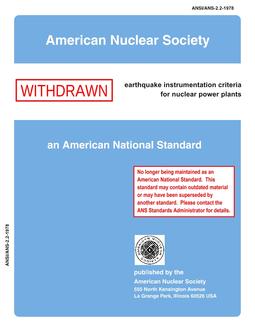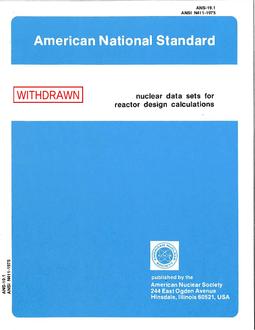This standard establishes criteria for the selection and use of meteorological data and identifies supporting hydrologic information to determine whether the design water temperature and cooling capacity requirements for the Ultimate Heat Sink (UHS) at a nuclear generating facility are adequately established. This standard also describes atmospheric effects that need to be considered when designing UHSs for safety-related systems at nuclear power plants such that cooling capacity requirements are met during a licensing-basis event.
– This standard applies to the design of the UHS cooling system at existing plants that utilize external water or air sources and includes both open-cycle (e.g., rivers, lakes, oceans, atmosphere) and closed-cycle (e.g., cooling ponds, spray ponds, cooling towers-wet or dry) UHS systems. It also applies to new nuclear plants that rely on similar external UHS cooling systems.
– This standard applies to cooling systems that are part of the UHS complex that reject heat to external water or air resources and involve meteorological elements in the design and operation of a UHS.
– Accident scenarios and assumptions for UHS designs that are not directly related to design meteorological input variables are not within the scope of this standard (e.g., downstream dam failure).
– This standard does not apply to natural draft cooling towers or to reactor designs that use passive cooling.
Product Details
- Published:
- 01/27/2022
- ANSI:
- ANSI Approved
- Number of Pages:
- 57
- File Size:
- 1 file , 1.9 MB
- Note:
- This product is unavailable in Ukraine, Russia, Belarus


